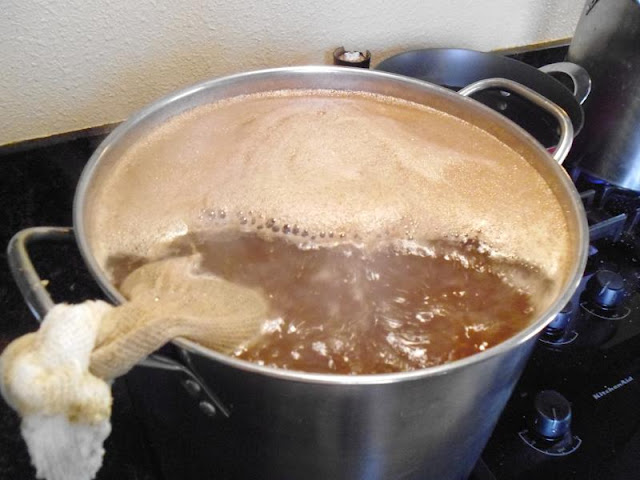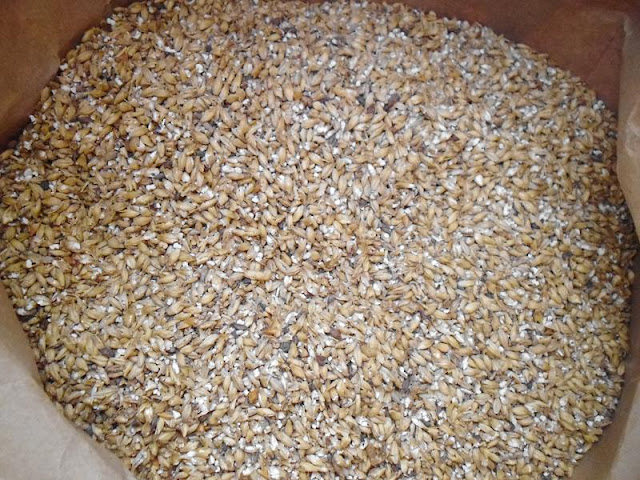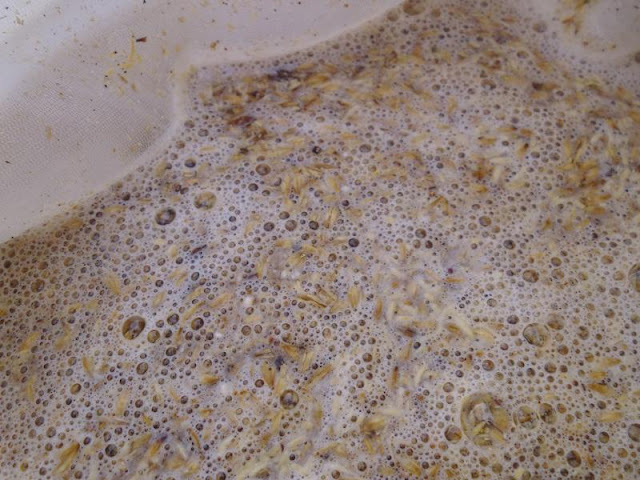 |
| Is this the end for my stove? |
 |
| I'm disappointed I don't get a preform to save yeast in. |
Unlike the first time doing this brew, where we used our 3-tier lautering setup, this batch was done using brew-in-a-bag. (Ironic seeing as how the 3-tier system was created to avoid having to do BIAB).
Compared to the previous batch, I added some more 2 row to compensate for my lower efficiency with BIAB, along with some Rye Malt to see if it would add a little zing to the final flavor.
 |
| I'm pretty sure this would not work on a rainy day. |
So into the water the grain went, and the mash was underway (at 65°C). This sat for an hour while I set everything else up for brewday.
 |
| This grain would not have made delicious scones |
 |
| Brisk brewing on a bright winter morning. |
 |
| Ready to go! |
 |
| Browner than a certain team from Cleveland |
 |
| I've been told that a certain stain on this stove was caused by a previous tenant causing a boilover |
 |
| Lots of hot break |
 |
| Chill out |
 |
| Amount of wort from 1 kettle |
 |
| Time for the yeast to take over |
 |
| Postboil/postpitch volume |
 |
| It's gonna blow! |
Burton Bomber
8 lbs 2 Row
0.75 lbs Brown Malt
0.5 lbs Roasted Barley
0.25 lbs Munich Malt
0.25 lbs Rye Malt
0.25 lbs Crystal 40
1 oz Fuggles (60 minutes)
0.5 oz Willamette (30 minutes)
0.25 oz Willamette (15 minutes)
0.25 oz Willamette (5 minutes)
WLP023 Burton Ale Yeast
Yeast harvesting
I plan to use WLP023 for some future batches. The easiest way to harvest it was to pull some of the wort from the starter. I boiled up a few mason jars of water the night before to do this.
After pitching most of my starter, I added in the water to my starter vessel to extract the diluted yeast mixture to each of the jars. Each was appropriately labeled and stached away in the fridge.
8 lbs 2 Row
0.75 lbs Brown Malt
0.5 lbs Roasted Barley
0.25 lbs Munich Malt
0.25 lbs Rye Malt
0.25 lbs Crystal 40
1 oz Fuggles (60 minutes)
0.5 oz Willamette (30 minutes)
0.25 oz Willamette (15 minutes)
0.25 oz Willamette (5 minutes)
WLP023 Burton Ale Yeast
Yeast harvesting
I plan to use WLP023 for some future batches. The easiest way to harvest it was to pull some of the wort from the starter. I boiled up a few mason jars of water the night before to do this.
After pitching most of my starter, I added in the water to my starter vessel to extract the diluted yeast mixture to each of the jars. Each was appropriately labeled and stached away in the fridge.





No comments:
Post a Comment
Hi folks, please only leave comments relative to the blog post. All spam will be removed and spammers will be blocked.
Note: Only a member of this blog may post a comment.